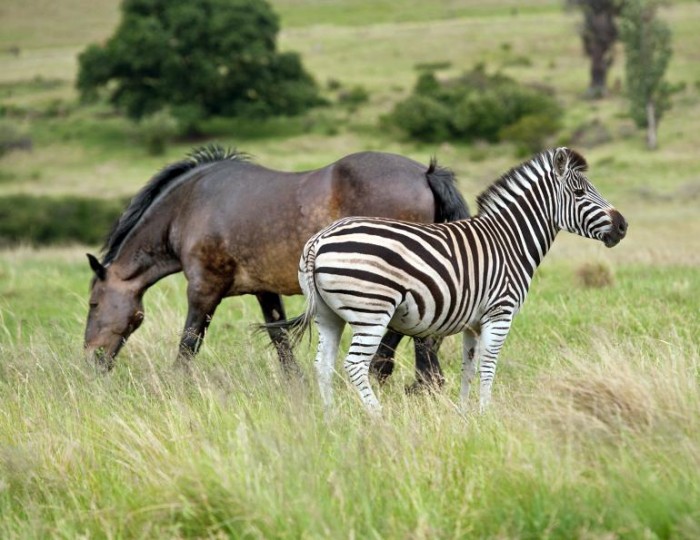
Behaviour of horse flies around zebras and horses
Only recently it has been believed that the function of zebra stripes is to protect the animals from biting flies. However, the exact mechanism by which stripes reduce attack by ectoparasites is yet unknown. Therefore, this study examined the behaviour of tabanids (horse flies) around captive zebras and uniformly coloured domestic horses. In a second experiment tabanids behaviour was also examined when the horses wore three different type of rugs.
For the study three captive plains zebras and nine horses were used. Observations of individual animals were video recorded or recorded by hand. Individual’s reaction to the tabanids were also recorded. For the second experiment one dark stable sheet was used, one white fly sheet and one white and black striped fly sheet.
Results showed that fewer horse flies landed on zebras than on horses per time unit, although rates of tabanids circling around or briefly touching the zebras and horses did not differ. Furthermore, detailed video analyses showed that tabanids failed to decelerate before contacting zebras resulting in fewer tabanids landing on zebra coats in comparison to horses. Analysis of individual’s reaction to the tabanids showed that zebras and horses respond very differently to the presence of flies. Zebras swish their tails almost continuously during the day. Horses, however, showed higher rates of skin twitching. The results of the second experiment showed that those wearing a striped pattern suffered far lower rates of tabanid touching and landing on coats.
The authors concluded that a striped coat prevented flies from making a controlled landing resulting in few tabanids probing for blood, and as a result of zebras’ changeable behaviour, few stayed a long time.
Do you use zebra striped rugs for your horses?
If no; would you consider using it after reading this article?
Expert opinion by Debby Gudden
Zebra stripes have long been a true mystery for researchers. Most prey animals have an inconspicuous coat which makes them more difficult to distinguish from their environment. Research has already shown that the way in which a dark horse's coat is reflected is different (horizontally) from that of a white horse's coat (reflective). The dark coat attracts more insects than the white coat due to the horizontal movement of light waves over the coat. Different experiments with dark, white and striped plates with glue have shown that the striped plates attract fewer insects when compared to the dark and white plates. These experiments have then continued to a striped model horse and then to experiments with living zebras. Blanket manufacturers have used this science to design the ‘zebra fly blanket’ that are nowadays used by many horse owners. The findings from this study contribute to the proof that the stripes of a zebra disrupt the flight patterns of biting (horse) flies.
> From: Caro et al., PLoS One (2019) 1-13. All rights reserved to 2019 Caro et al.. Click here for the online summary.


